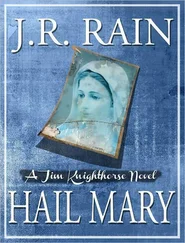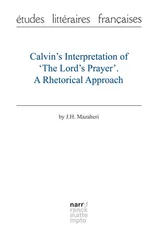Helge Fauskanger - J.R.R. Tolkien’s Lord’s prayer and Hail Mary in Quenya - Syntactical and Etymological Analysis
Здесь есть возможность читать онлайн «Helge Fauskanger - J.R.R. Tolkien’s Lord’s prayer and Hail Mary in Quenya - Syntactical and Etymological Analysis» весь текст электронной книги совершенно бесплатно (целиком полную версию без сокращений). В некоторых случаях можно слушать аудио, скачать через торрент в формате fb2 и присутствует краткое содержание. Жанр: Языкознание, на английском языке. Описание произведения, (предисловие) а так же отзывы посетителей доступны на портале библиотеки ЛибКат.
- Название:J.R.R. Tolkien’s Lord’s prayer and Hail Mary in Quenya: Syntactical and Etymological Analysis
- Автор:
- Жанр:
- Год:неизвестен
- ISBN:нет данных
- Рейтинг книги:5 / 5. Голосов: 1
-
Избранное:Добавить в избранное
- Отзывы:
-
Ваша оценка:
- 100
- 1
- 2
- 3
- 4
- 5
J.R.R. Tolkien’s Lord’s prayer and Hail Mary in Quenya: Syntactical and Etymological Analysis: краткое содержание, описание и аннотация
Предлагаем к чтению аннотацию, описание, краткое содержание или предисловие (зависит от того, что написал сам автор книги «J.R.R. Tolkien’s Lord’s prayer and Hail Mary in Quenya: Syntactical and Etymological Analysis»). Если вы не нашли необходимую информацию о книге — напишите в комментариях, мы постараемся отыскать её.
J.R.R. Tolkien’s Lord’s prayer and Hail Mary in Quenya: Syntactical and Etymological Analysis — читать онлайн бесплатно полную книгу (весь текст) целиком
Ниже представлен текст книги, разбитый по страницам. Система сохранения места последней прочитанной страницы, позволяет с удобством читать онлайн бесплатно книгу «J.R.R. Tolkien’s Lord’s prayer and Hail Mary in Quenya: Syntactical and Etymological Analysis», без необходимости каждый раз заново искать на чём Вы остановились. Поставьте закладку, и сможете в любой момент перейти на страницу, на которой закончили чтение.
Интервал:
Закладка:
lúmesse, noun in locative: in [the] hour , on [the] hour . This is the sole word in the text before us that displays the normal, well-known locative ending - sse, which is important, since this demonstrates that the strange "locative" (?) forms cemende, Erumande(q.v.) coexisted with the normal locative in - sse: Tolkien had evidently not dropped one in favor of the other [20] VT43 argues that - de is simply an allomorph of - sse .
. Notice that the locative can denote "location" in time as well as in space. Removing the ending leaves us with lúmefor hour , a word that is also attested by itself, though in the Etymologies with a somewhat different gloss: LR:370 lists an undefined stem lu-, whence Quenya lúme time . Yet this word is also attested with the meaning hour , in the famous greeting elen síla lúmenna omentielvo"a star shines upon the hour of the meeting of our ways" (so in WJ:367; the form Frodo delivers in LotR has … lúmenn' omentielvo, a vowel being elided, and the translation offered goes a star shines upon the hour of our meeting ). An earlier version of this greeting, quoted and referenced in the entry - mmabelow, even has locative lúmesse(rather than allative lúmenna) just as in the text before us. – As for the derivation of lúme, it incorporates the same ending - meas in # indómeabove. As we demonstrated in the relevant entry, the suffix - memay be used to form abstracts; in this case it is used to derive a noun denoting something intangible. The stem lu- is not itself defined, but for another word denoting a period of time that is derived by means of the ending - me, cf. lóme night from primitive do3mê(LR:355). Lúmewould be the later form of a primitive word * lûmê.
mal, conjunction but . A wholly new word, for which no etymology can be offered. Known bases like mbal- in LR:372 and smal- in LR:386 could have yielded a Quenya word malas far as phonology is concerned. However, neither base seems to have a suitable meaning (the former is undefined but yields the Quenya words malle street and ambal shaped stone , flag , while the latter base is defined yellow ; it is very difficult to imagine any semantic connection between this and a conjunction but ). We should probably be looking for a simpler stem *mal- instead, for semantic reasons apparently unconnected to the "extended" base malat- gold (PM:366), though this base and smal- yellow in the Etymologies could actually both be elaborations of a root with precisely the form *mal- [21] VT43:23 presents some thoughts about possible etymologies of mal , for instance that it could be a short ablative of má "hand" and therefore signifying "away from one hand" = "on the other hand". I do not think I am insulting anyone if I say this is extremely speculative, but I can offer no really plausible etymology myself.
. – The word for but so far used by post-Tolkien writers is ná, nán(LR:375 s.v. ndan-) or with a short vowel nan(as in LR:72, in Fíriel’s Song: nan úye sére indo-ninya but my heart resteth not ). Whether Tolkien decided to drop this earlier conjunction altogether in favor of malcannot be determined at this stage; since no Eldarin word for but occurred in any source that was published during Tolkien’s lifetime, he would in principle be "free" to change this word as often as he pleased. Why he might have wanted to drop nánor nanas the word for but can only be speculation. It may be noted, however, that náncan also be interpreted * I am , sc. the copula náwith the first person pronominal ending - n. (This is a tentative observation, since because of the scarcity of published material we know very little of how Tolkien would conjugate the verb "to be". However, in VT40:31 Christopher Gilson interprets the form náreoccurring in the early poem Narqelion as náwith a third person pronominal ending, which would suggest that nácan indeed receive the normal pronominal suffixes.) As for the form nan, it may be that Tolkien wanted to reserve this word as a preposition * back : This is the meaning of the stem ndan-, LR:375, and the same entry in Etym also lists a Quenya prefix nan- backwards . A conjunction mal, wholly distinct from nan, would be completely unambiguous. (It would seem that Tolkien came up with ever new words for but in Quenya; one late source reproduced in VT41:13 has nó [22] And now VT43:23 adds yet other words for "but": one , on , ono , anat .
.)
María, fem. name: Mary . The "Quenya" form of the name is transparently based on the Latin form and pronunciation – not surprising in light of Tolkien’s love for Latin, not least in its capacity as the language traditionally used in Catholic liturgy. The names Maríaand Yésusoccurring in this rendering of Hail Mary represent the first known cases of Tolkien using non-Eldarin, "real-world" elements in a Quenya text. We do know cases of Tolkien rendering "real-world" names into Quenya by their meaning, e.g. Eadwine (Edwin) = Herendil* Fortune - friend (LR:364 s.v. kher-). However, he did not attempt to render "Mary" by its meaning (which is in any case uncertain; the spelling Mariam occurring in the Greek text of the Gospel of Luke points to a Semitic original Maryam , older variant of Miryam = English Miriam; one suggested interpretation is "Rebellious One", but by New Testament times it was probably a traditional name used with little thought of whatever meaning it once conveyed). To Tolkien, using a Latin-based form of a pre-existing name in a Quenya text may not have represented a great leap; after all, he sometimes spoke of Quenya as the Elven-Latin (see LotR, Appendix F) and likened the status of Quenya in Middle-earth to that of Latin in our own world: an ancient, august language of ritual.
massamma, noun with pronominal ending: our bread . Concerning the ending - mmafor exclusive our , see separate entry below. The word for bread is here # massa, though both the Qenya Lexicon (QL:59) and the Etymologies (LR:372 s.v. mbas-) give mastainstead. Yet in PM:404, reproducing a source written at some point in the fifties and probably early in the decade (cf. PM:395), a word for bread-giver appears as massánie. This seems to presuppose # massaas the word for bread , allowing us to conclude that the text before us is post- Etymologies . In PM:404, Tolkien also mentioned lenn-mbassas the combination that produced Sindarin lembas, journey-bread (cf. the entry for lembas in the Silmarillion Index). Hence the stem was still thought of as mbas-, though the form of the actual noun bread had been adjusted. The primitive form would be * mbassâ, which may also be represented as * mbaS-â (see esselyaregarding esse). While often adjectival, the ending - âis also common in the case of nouns denoting inanimate objects. The stem mbas- itself means (at least according to the Etymologies ) knead , which in the case of the words for bread would refer to the kneading of the dough. mbas- is evidently related to masag- knead , make soft by rubbing, kneading, etc. (LR:371). Probably both stems should be seen as elaborated variants of a simpler root *mas-.
Читать дальшеИнтервал:
Закладка:
Похожие книги на «J.R.R. Tolkien’s Lord’s prayer and Hail Mary in Quenya: Syntactical and Etymological Analysis»
Представляем Вашему вниманию похожие книги на «J.R.R. Tolkien’s Lord’s prayer and Hail Mary in Quenya: Syntactical and Etymological Analysis» списком для выбора. Мы отобрали схожую по названию и смыслу литературу в надежде предоставить читателям больше вариантов отыскать новые, интересные, ещё непрочитанные произведения.
Обсуждение, отзывы о книге «J.R.R. Tolkien’s Lord’s prayer and Hail Mary in Quenya: Syntactical and Etymological Analysis» и просто собственные мнения читателей. Оставьте ваши комментарии, напишите, что Вы думаете о произведении, его смысле или главных героях. Укажите что конкретно понравилось, а что нет, и почему Вы так считаете.












